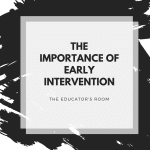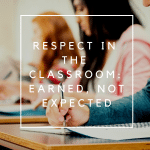Teachers use multiple resources to learn and strengthen their craft. There are online resources, educational journals, district level in-service, networking groups and educational conferences. This week Lauren and I were both able to participate in conferences offered outside of our school district. There is so much value to networking and learning offered at conferences.
Mentor Teacher: Lori Rice—As a veteran teacher of 19 years I sign up for conferences with excited hope. There are many things I am implementing in my classroom successfully, so finding a conference that will provide new information can be difficult. This week I was able to attend two conferences, however, with new to me information. I love when I come across things that make me think.
The first conference I attended was put on by the State Education Department. I have been using formative assessment, but his week I was able to hear Margaret Heritage speak to teachers in Kansas. We covered 10 strategies for implementing successful formative assessment in classrooms. I was pushed to think about going beyond exit tickets and checklists. Formative assessment is embedded in good classroom management and pushes our students to bridge gaps between their current knowledge base and where we want them to go.
The first two strategies are setting clear objectives and clear success criteria. I have been thinking about moving what I want my students to know beyond objectives into higher level learning. This can be accomplished when I am clear in what those goals are and clear in what success looks like. I am looking forward to working on this skill and also having conversations with Lauren about what this can do for students.
I also attended a conference sponsored jointly by the Kansas Council for Social Studies and the State Department for Education. I learned about many resources for elementary teachers. There are online resources for economics and teaching historical thinking. Again, I was able to think about incorporating some of these resources and activities into my classroom this year. We can use some of the historical thinking activities with reading groups and also with writing this last 9-weeks. We have two regions of the US to cover and I plan to focus on economics more to include those standards. With technology being ever-changing, it is fun to sit with other educators and reflect and share resources that are useful in classrooms.
Student Intern: Lauren Laudan–This past week I had the incredible opportunity to attend the Kansas Exemplary Educators Network (KEEN) Conference in Topeka, KS. It was sponsored by the Kansas Department of Education. Attending KEEN was a huge honor. It is composed of teachers who have been recognized
for their wonderful work in the field; those who are at the top of their career. I was nominated by a professor from Kansas State University and then selected by a committee to represent K-State as the 2015 Teacher of Promise. This gave me the chance to meet and connect with future teachers, current teachers and learn about their journey to become a teacher. I also got to network with amazing educators including Teachers of the Year and our state Interim Commissioner of Education, Brad Neuenswander. It was truly two days I will never forget.
One session I attended was “The Power of You: The Hopeful Mindset”. There are two mindsets one can possess: a fixed mindset or a growth mindset. A person with a fixed mindset avoids challenges, gives up easily due to obstacles, ignores constructive criticism, and feels threatened by the success of others. They tend to be the person holding the rest of the team back. “There is no way we can get this done in such of short amount of time.” Or as we may hear from our students, “I will never be good at math.” We all know these people. Or maybe we are these people.
On the other hand, a person with a growth mindset embraces challenges, persists in the face of setbacks, learns from criticism, sees effort as the path to mastery, and finds lessons and inspiration in the success of others. This is what we should strive to model for our students everyday so they too can develop a growth mindset.
The tricky part is we may think we have a growth mindset, but may not be modeling it in our daily lives. If you have ever said to a student, “You are so smart for getting that problem correct”, you are teaching students it is about being smart in finding a correct answer, not persisting, trying new strategies, or doing their personal best. Instead, next time try saying, “I’m so proud of how you didn’t give up and you kept trying, I know that problem was challenging.” Try to remember, “Failure should be a tool, not an outcome”. And as teachers we need to stray away from using failure as a negative and instead see it in a new, positive light.
This breakout session also discussed the remarkable power of hope and how as teachers we can instill hope in our students by creating excitement about their future and showing each student they have the power to make their future better. Fun fact: the ideas and energy we have for the future can change lives and is a stronger predictor of success than a GPA or SAT score. But unfortunately only half of American students are hopeful. This leaves a
lot of our country’s children hopeless. All it takes is one person to affect the lives of many, for good or for bad. Hopeful students take on challenges energetically, are full of life, and focus on success. There are many benefits to being a high-hope person including living longer, experiencing less stress and anxiety, and having a higher well-being.
At the end of this session we were given a rock and told to go out and create “ripples of hope for others.” How will you create ripples of hope?
Another session I attended was “An Envisioned Future for Kansas Students”. “Right now it may seem dark, but that’s when the stars shine the brightest”. There is a lot of controversy and politics involved in education, but stars are shining all around us. Whether it’s teachers changing lives or students learning to believe in themselves it is important to focus on our students. Instead of focusing on what needs improvement in our schools, let’s make an effort to focus on what is going right. Because in the end, we are there for one reason and one reason only: our students. And they are counting us.
Although I cannot include everything I took away from these two days in one article, these were the highlights I took away. It was about the difference between a fixed and growth mindset, learning about the power of instilling hope in our students, learning strategies of inspiring and motivating students to learn and grow,working with the Kansas Commissioner of Education to rewrite the vision of Kansas education and more. It was also crazy, exhausting, motivating and a refreshing couple days. Just as we ask our students to push themselves and learn, we as educators must do the same.





